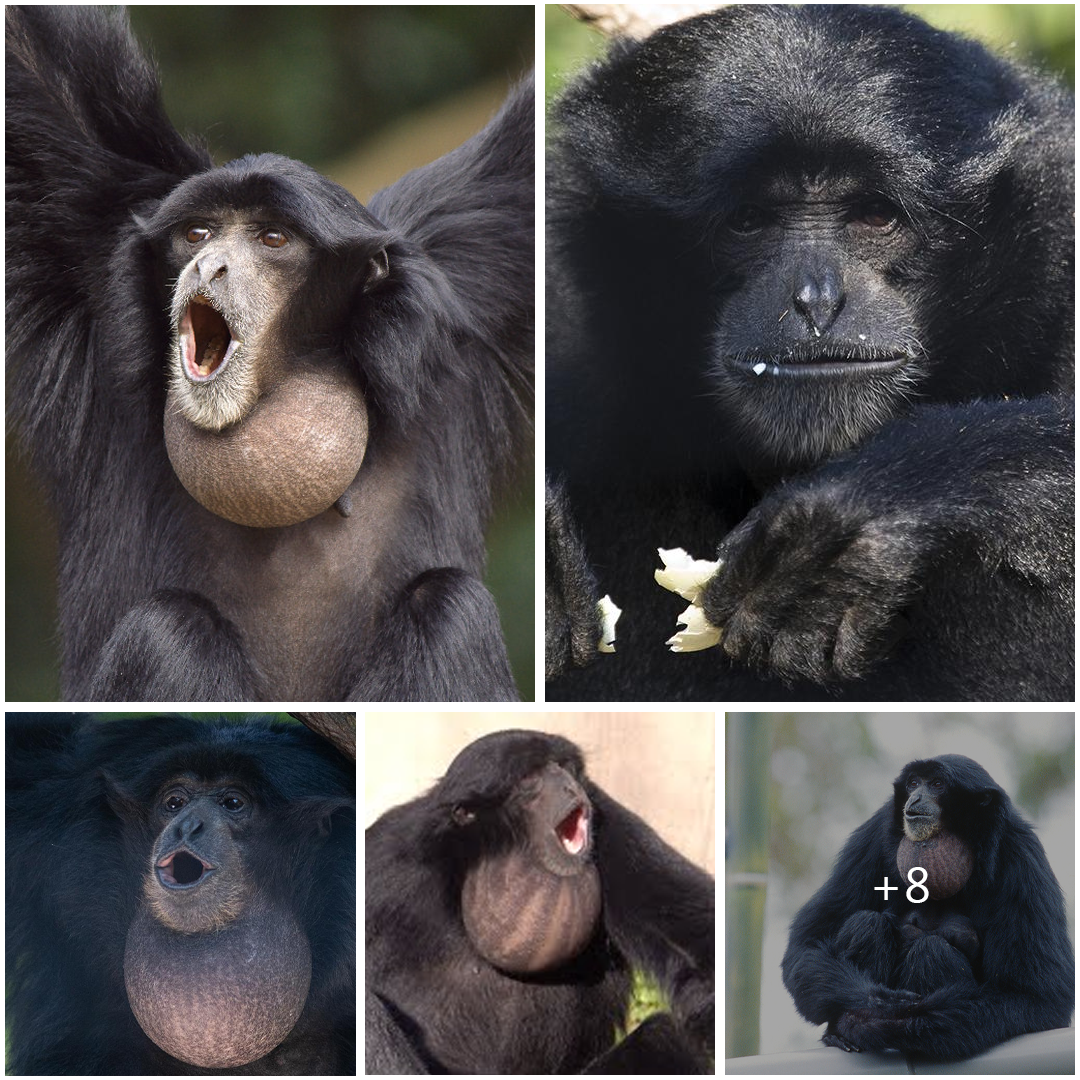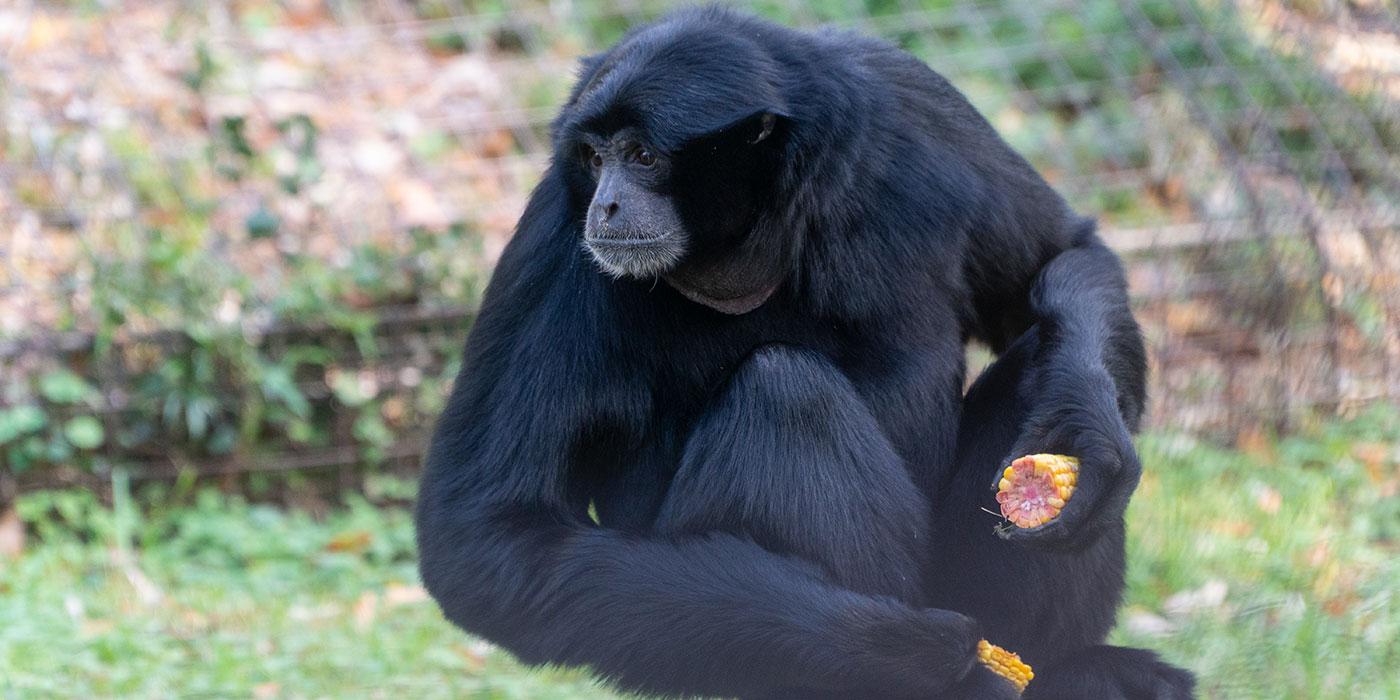
Like the white-cheeked gibbon, siamangs live in flexible social groups, typically comprised of an adult pair with offspring. Male siamangs exhibit more infant care for their offspring than do other gibbon species, taking over the majority of infant carrying during the infant’s second year of life.
Siamangs are notable for having more coordination and contact during daily activities. The family usually forages for food as a unit. Siamangs are fiercely territorial and defend their territory with daily singing rituals. Boundary disputes, which are very rare, involve high-speed chases through the trees, slapping and biting as they go.

Siamangs follow a daily pattern or routine. They wake at sunrise and perform their morning concert before setting out in search of food. It usually takes a siamang about five hours to eat its fill. After eight to ten hours of activity, they identify a place to rest or sleep.
Like most primates, one of the most important social activities of a siamang is grooming. Adults groom on average 15 minutes per day. Grooming is a display of dominance. The more dominant animals receive more grooming than they give. An adult male grooms the females and sub-adult males. In the breeding season, adult males will focus more on the females.





